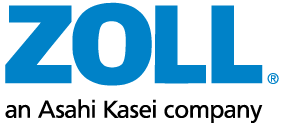May 15, 2014 - ZOLL to Showcase Advanced ResuscitationTechnology at EuroPCR 2014
| MEDIA CONTACT: | Diane Egan |
ZOLL LIFEVEST WEARABLE DEFIBRILLATOR, ADVANCED RESUSCITATION TECHNOLOGY, AND TEMPERATURE MANAGEMENT SOLUTIONS TO BE SHOWCASED AT EUROPCR 2014
May 15, 2014—CHELMSFORD, MASS.—ZOLL Medical Corporation, a manufacturer of medical devices and related software solutions, announced today that that it will display its portfolio of clinical resuscitation products, including the LifeVest®Wearable Defibrillator and the AutoPulse®Non-Invasive Cardiac Support Pump, along with sudden cardiac death (SCD) education and screening tools, in Booth #P17 at EuroPCR 2014 from 20-23 May in Paris.
The following sessions will discuss the LifeVest and the AutoPulse:
- Gilles Montalescot, MD, Pitié-Salpêtrière University Hospital, Paris, France; David Kandzari, MD, Piedmont Heart Institute, Atlanta, Georgia; and Johannes Sperzel, MD, Kerchoff Klink, Bad Nauheim, Germany, will present a satellite symposium entitled “Sudden Cardiac Death in Post-AMI Patients—Who is at Risk?,” Wednesday, 21 May, 1:35-2:35 p.m., Room 352B.
- Elliot Smith, MD, London Chest and Chase Farm Hospitals, will share experiences utilizing the AutoPulse in the cath lab, Wednesday, 21 May, and Thursday, 22 May, 10:00-11:00 a.m. and 12:30-1:30 p.m., Booth #P17.
The LifeVest protects patients at risk for SCD. It is used for a wide range of patient conditions or situations, including following a recent myocardial infarction or coronary revascularization. One in five post-acute myocardial infarction (AMI) patients have been shown to be at high risk of dying after percutaneous coronary intervention (PCI).1 The majority of mortality in AMI patients post-PCI occurs in the first three months—one out of every 10 high-risk patients die, with about 60% of this mortality due to SCD.1,2 The LifeVest gives physicians time to optimize medical therapy and assess a patient’s long-term risk for sudden death.
The LifeVest is lightweight and easy to wear, allowing patients to return to their activities of daily living, while having the peace of mind that they are protected from SCD. The LifeVest continuously monitors the patient’s heart and, if a life-threatening heart rhythm is detected, the device delivers a treatment shock to restore normal heart rhythm.
Additional products on display from ZOLL include:
- The AutoPulse is an automated, portable chest compression device. It is the only mechanical CPR system to have shown improved survival in comparative clinical trials. The AutoPulse is equal to the highest quality manual CPR and more than tripled survival compared to typical quality CPR during witnessed shockable arrests.3
- The X Series® Monitor/Defibrillator is about half the size and half the weight of competitive full-featured monitor/defibrillators, yet extremely powerful and built to extensive standards for ruggedness and durability. The X Series combines the breakthrough capabilities of ZOLL defibrillation, pacing, and CPR assistance with advanced monitoring parameters. Designed initially for EMS operations, it is also ideal for transporting critically ill patients throughout the hospital.
- The R Series® Code-Ready® Defibrillators are designed to extend “Simple, Smart, and Ready” defibrillation to every hospital department through advanced, cost-effective solutions for resuscitation. Both the R Series ALS and R Series Plus are available with pacing, end-tidal CO2, noninvasive blood pressure, and SpO2 monitoring capabilities. The R Series Plus powers on as an AED and with the push of a button can be converted to a manual defibrillator with all the capability of the R Series ALS.
- ZOLL’s Intravascular Temperature Management (IVTM™) system offers health care providers the power and control they need to rapidly, safely, and effectively manage the core body temperature of critically ill or surgical patients. The Thermogard XP® delivers accurate, easy-to-use, and cost-effective control for both cooling and warming applications. The temperature management system provides a variety of catheter options depending upon the specific patient needs.
- The LifeBridge® System allows the cardiovascular system and critical organs to rest, heal, and recover by improving blood flow and oxygenation in an emergency setting.
About ZOLL Medical Corporation
ZOLL Medical Corporation, an Asahi Kasei Group company, develops and markets medical devices and software solutions that help advance emergency care and save lives, while increasing clinical and operational efficiencies. With products for defibrillation and monitoring, circulation and CPR feedback, data management, fluid resuscitation, and therapeutic temperature management, ZOLL provides a comprehensive set of technologies that help clinicians, EMS and fire professionals, and lay rescuers treat victims needing resuscitation and acute critical care. For more information, visit www.zoll.com.
About Asahi Kasei
ZOLL Medical Corporation, an Asahi Kasei Group company, develops and markets medical devices and software solutions that help advance emergency care and save lives, while increasing clinical and operational efficiencies. With products for defibrillation and monitoring, circulation and CPR feedback, data management, fluid resuscitation, and therapeutic temperature management, ZOLL provides a comprehensive set of technologies that help clinicians, EMS and fire professionals, and lay rescuers treat victims needing resuscitation and acute critical care. For more information, visit www.asahi-kasei.co.jp/asahi/en/.
Copyright © 2014 ZOLL Medical Corporation. All rights reserved. AED Pro, AutoPulse, Code-Ready, IVTM, Real CPR Help, R Series, RescueNet, See-Thru CPR, X Series, Thermogard XP, and ZOLL are trademarks or registered trademarks of ZOLL Medical Corporation in the United States and/or other countries. Asahi Kasei is a registered trademark of Asahi Kasei Corporation. All product names are the property of their respective owners.
1Bobrow BJ, et al. Ann Emerg Med. 2013 Jul;62(1):47–56.e1. Epub 2013 Mar 7.
2Wik L, et al. The impact of CPR duration on survival to discharge between integrated AutoPulse-CPR and manual–CPR during out-of-hospital cardiac arrest of presumed cardiac origin. Resuscitation. 2012;83:e17
